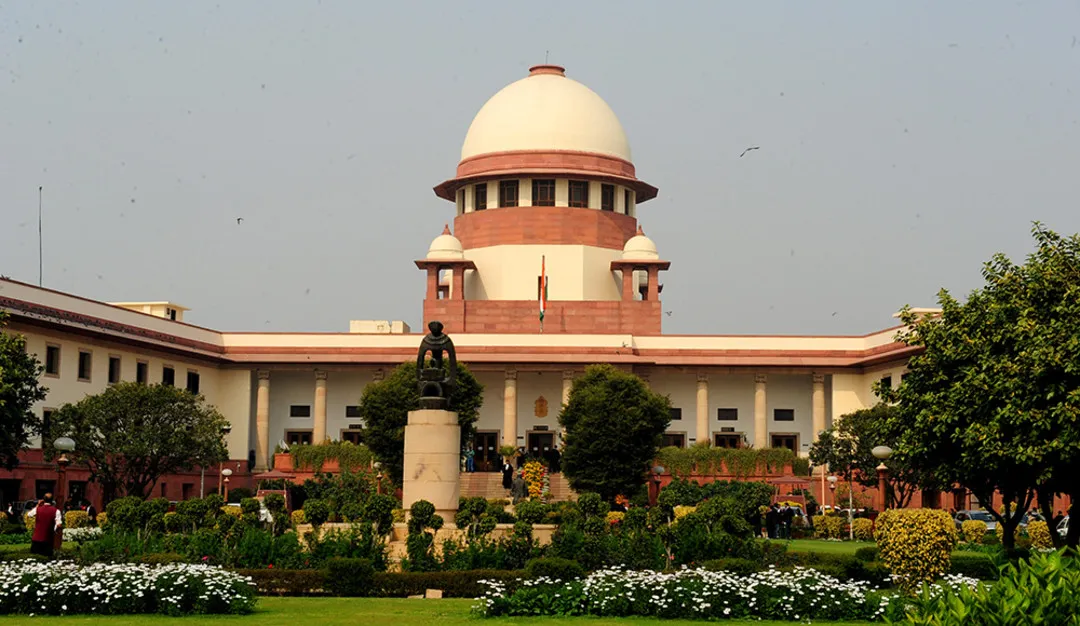Recently, N.V. Ramana, Chief Justice of India, stated that women deserve 50% reservation in all levels of the judiciary. He called for global women’s solidarity where CJI mentioned they have only chains to lose, they must unite.
“Condemning centuries of job discrimination against women, Chief Justice N.V. Ramana called for an “urgent correction” and said he strongly supports a “significant percentage” of seats for women in law schools and universities. “Enough of 2,000 years of suppression.” It’s past time for 50% female judiciary representation. It’s your right. Not for charity,” Chief Justice stated at a Supreme Court session organised by women Advocates. India’s higher judiciary, including the Supreme Court and high courts, currently has no policy of female reservation. Reservations in the lower courts are determined by state and the high court policy. Justice Ramana’s statement came weeks after his collegium cleared the path for a female Chief Justice in 2027.
There are presently four women judges in the Supreme Court, out of the sanctioned 34.


On August 31, three judges were appointed to the Supreme Court, bringing the total number of women to 11.
After that, in September 2027, she will become the first female Chief Justice. Her term will be around a month long.
Justice Ramana noted that women make up roughly 30% of the lower judiciary. “Women make up 11.5 percent of high court judges.” Out of 33 justices, four are women. So it’s only 13%.
Only 15% of the 1.7 million advocates are female. Women make up only 2% of the state bar council elected representatives. The Bar Council of India does not have a female member,” the Chief Justice stated. Male attitudes prevent women from entering the workforce.
Insufficient infrastructure, packed courtrooms and the absence of women’s washrooms are all factors that discourage women from entering the field. CJI Ramana mentioned during my high court career, I saw that ladies had no toilets. “Women lawyers have to go considerable distances to court and wait in hallways.”
Diversifying legal education is an essential focal area, CJI said. “As a starting step, I firmly recommend a high number of seats for women in law schools and universities.”
Justice Ramana emphasised that inclusion of “women” judges and lawyers will substantially improve the quality of “Justice delivery” and that he will wholeheartedly support initiatives that will further the cause of eliminating gender disparity in the profession. Women lawyers and judges are role models for young girls aspiring to enter the field, Justice Ramana added. Justices Banerjee, Kohli, Nagarathna, and Trivedi were all complimented for their acts in preserving the Constitution, which he said will inspire women not only in the legal profession but in all aspects of life.
Also Justice Nagarathna said: “Women visibility as judicial officers can pave the way for greater representation of women in other decision-making positions such as legislative and executive branches of the government.”
IS THIS, AS FORWARD LOOKING AS IT APPEARS TO BE, THE PATH TO EQUALITY?
Women judges make a significant contribution to the quality of decision-making and, as a result, to the quality of justice. In order to be selected as a judge, women must have the requisite qualifications. And as we are women, with all the social and cultural implications that entails, including intricate family relationships and obligations. Men and women judges have different perspectives on the law and how it affects people. Women judges bring a broader and more compassionate perspective to the courtroom as a result of their personal experiences. Women in adjudication bring to the fore concerns that would not have been explored otherwise, broadening the discussion and maybe preventing ill-conceived or improper rulings. A gender viewpoint promotes the fairness of judgement, thereby benefiting both men and women. All judges should aim to include a gender viewpoint in their work. When we talk about equality, we talk about equal opportunity, not an assured ticket to ranks. When it comes to Judiciary, wouldn’t equality be giving women an equal and fair chance to appear for the selection process and quality guidance to excel in the same. Women getting 50% reservation, does not imply that all men shall get the remaining 50% based on merit. Those 50% shall also accomodate SC/ST/OBC/ EWS category male candidates. Apart from that, such 50% reservation for women also brings to surface the issue of transgender representation in the Judiciary. It assumes that 50% of the population is women and the remaining are a part of the other 50%. According to the law ministry, only 12% of the 677 sitting Supreme Court and high court judges are women. Only the Madras High Court has more than ten female judges among its 25 members. The Madras high court has 13 female judges out of 58 total, which is over 22% female. Manipur, Meghalaya, Bihar, Tripura, and Uttarakhand have no female judges, whereas seven other high courts have one. India’s 25 high courts have a total of 1098 judges. In September, 465 positions (almost 42%) were unfilled.
WHAT DO WOMEN IN JUDICIARY NEED?
Women have held higher positions in India, such as President, Prime Minister, and Speaker, but they are still underrepresented in higher judicial positions, such as Chief Justice of India, Attorney General, and Solicitor General. The lack of female judges in the judiciary has been highlighted in Parliament multiple times and debated by prominent panels at various legal conferences. Women in the judiciary must be encouraged.
Quality education, scholarships, and equal compensation are all possibilities. In the legal industry. Women are underrepresented in the judiciary compared to men. Women hold around a third of judicial positions.
Better court infrastructure to support women’s Sanitation requirements. Not just in the higher courts, but in the lower level courts where there are no proper toilet/sanitation facilities available for women.
Proper guidance and awareness, throwing away stereotypes, flexibility in age limits for judicial posts, etc.
CONCLUSION
The Indian judiciary has always wrestled with gender issues. Justices need to be “sensitized” The increase in female judicial participation may also help establish a more balanced and humane approach to sexual abuse cases. This is especially true when male judges fail to empathize with female victims. The judiciary does not tolerate intimidation, exclusivity, or privilege For judicial credibility, female participation is essential. Discriminatory judges undermine public confidence in the court as a protector of the law and human rights. A female presence is required to determine judicial legitimacy. Gender equality in the court and policy-making judicial bodies should be encouraged in order to produce a more just rule of law. Women judges boost public confidence in the justice system. Equal opportunity applies to all women, regardless of aptitude, talent, or skill. As a result, there may be a greater focus on women’s issues and legislation that is gender-neutral, as well as a guarantee of gender-based success or dominance. It is important to encourage more female judges.
Women have held higher positions in India, such as President, Prime Minister, and Speaker, but they are still underrepresented in higher judicial positions, such as Chief Justice of India, Attorney General, and Solicitor General. The lack of female judges in the judiciary has been highlighted in Parliament multiple times and debated by prominent panels at various legal conferences. Women in the judiciary must be encouraged.























